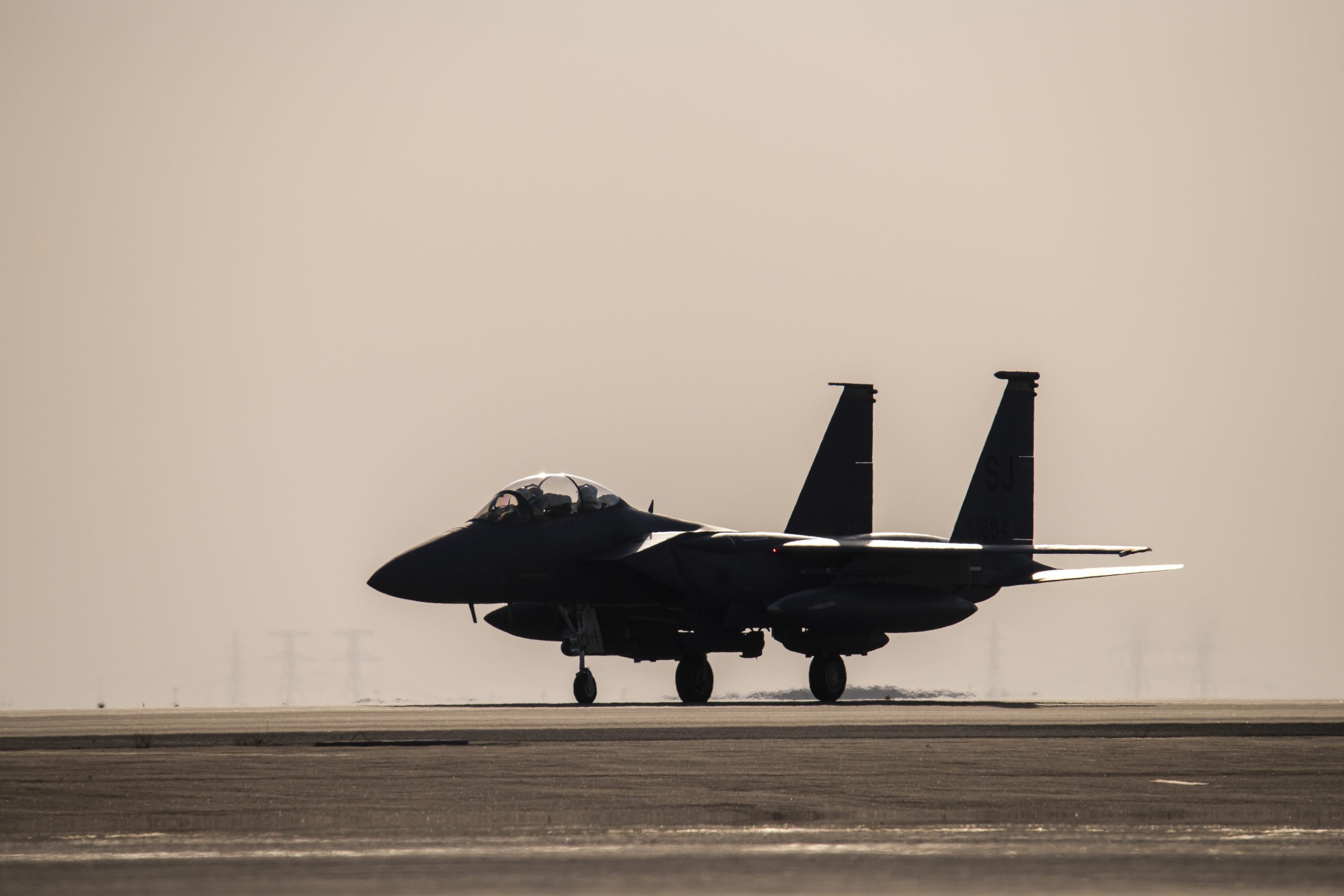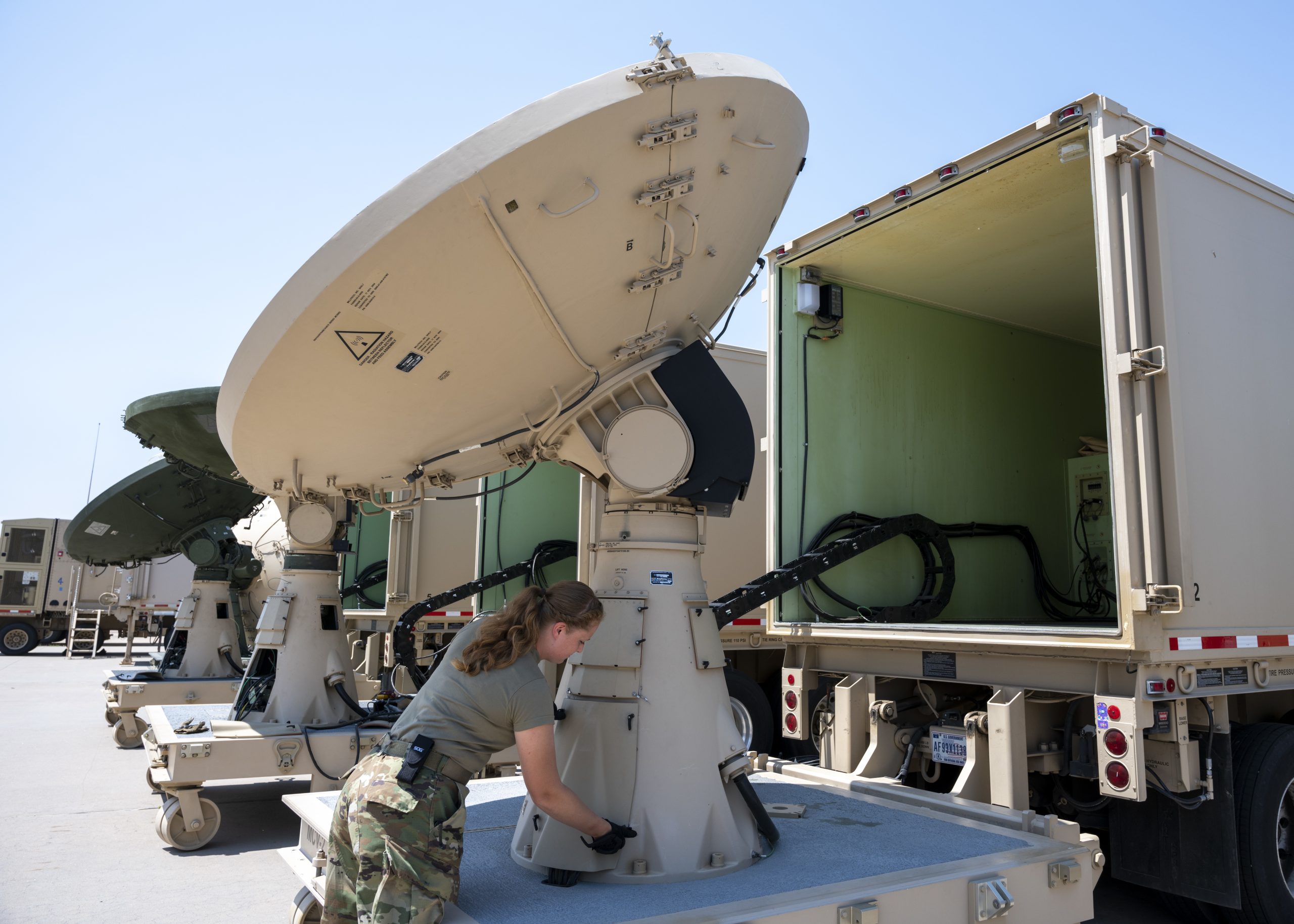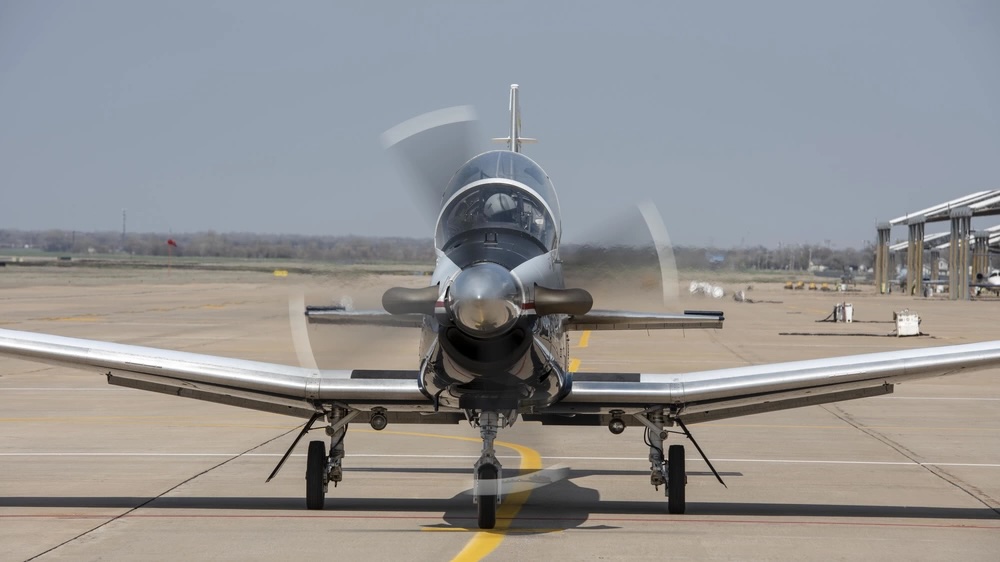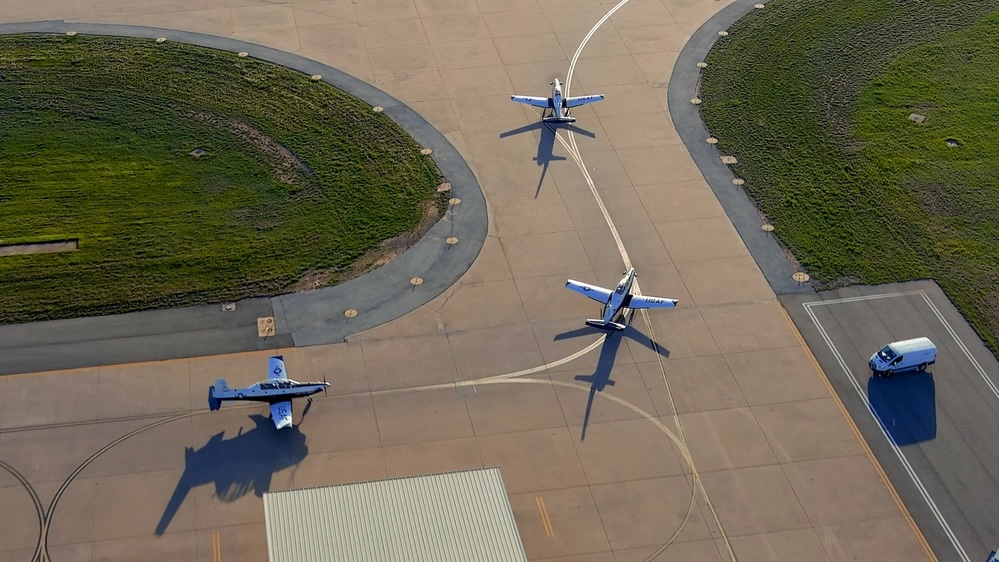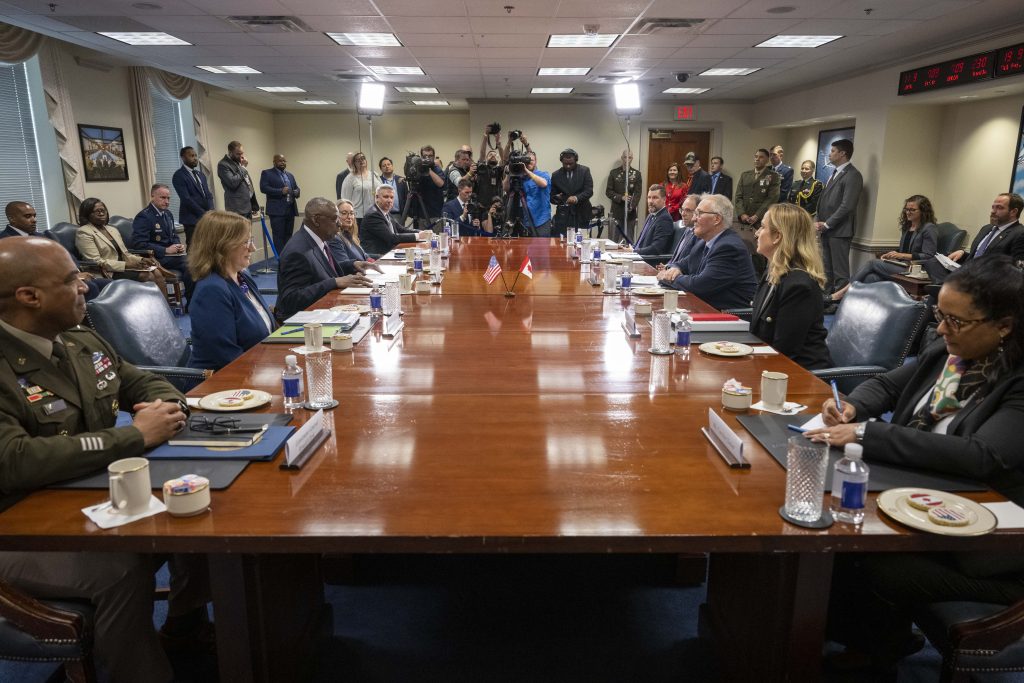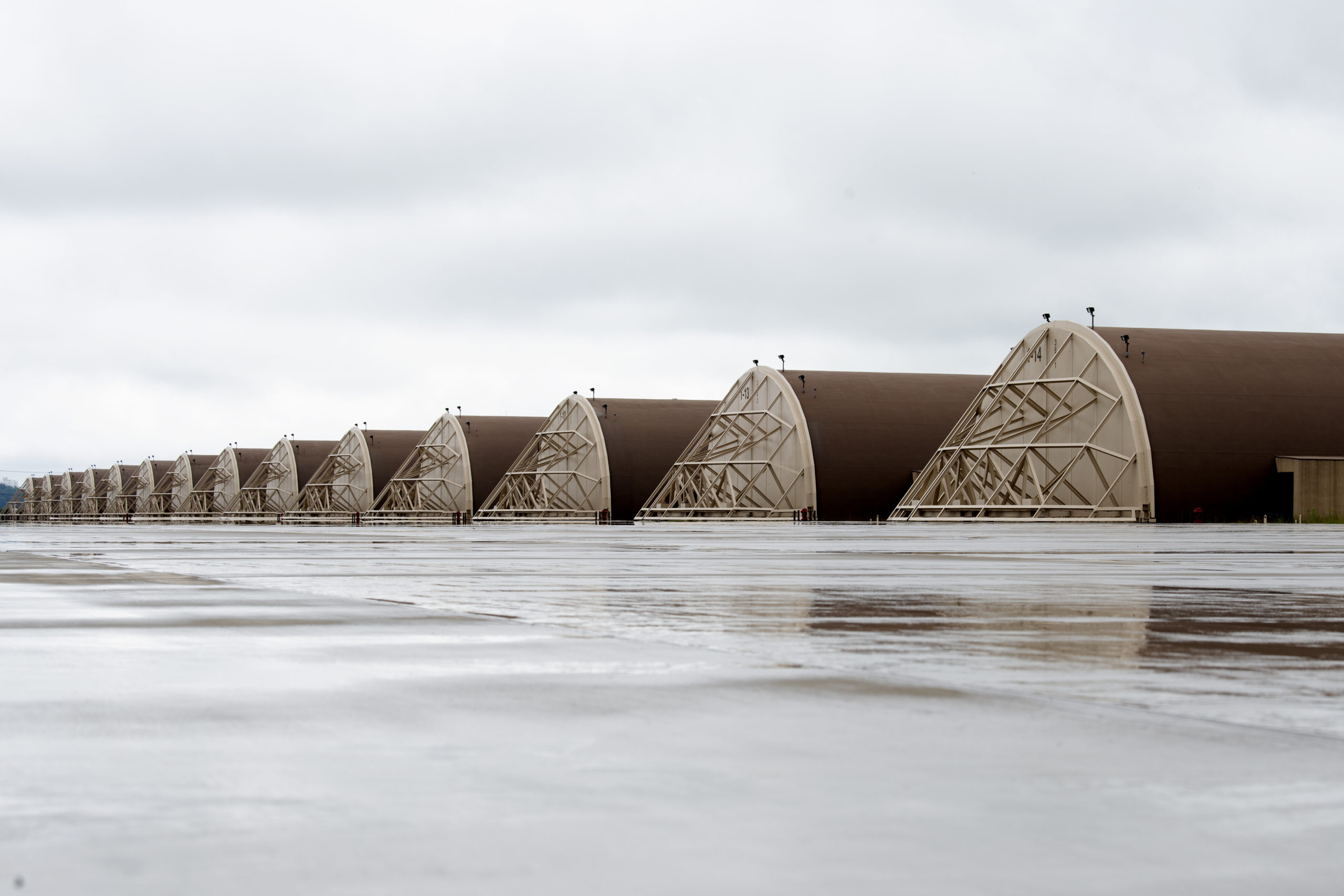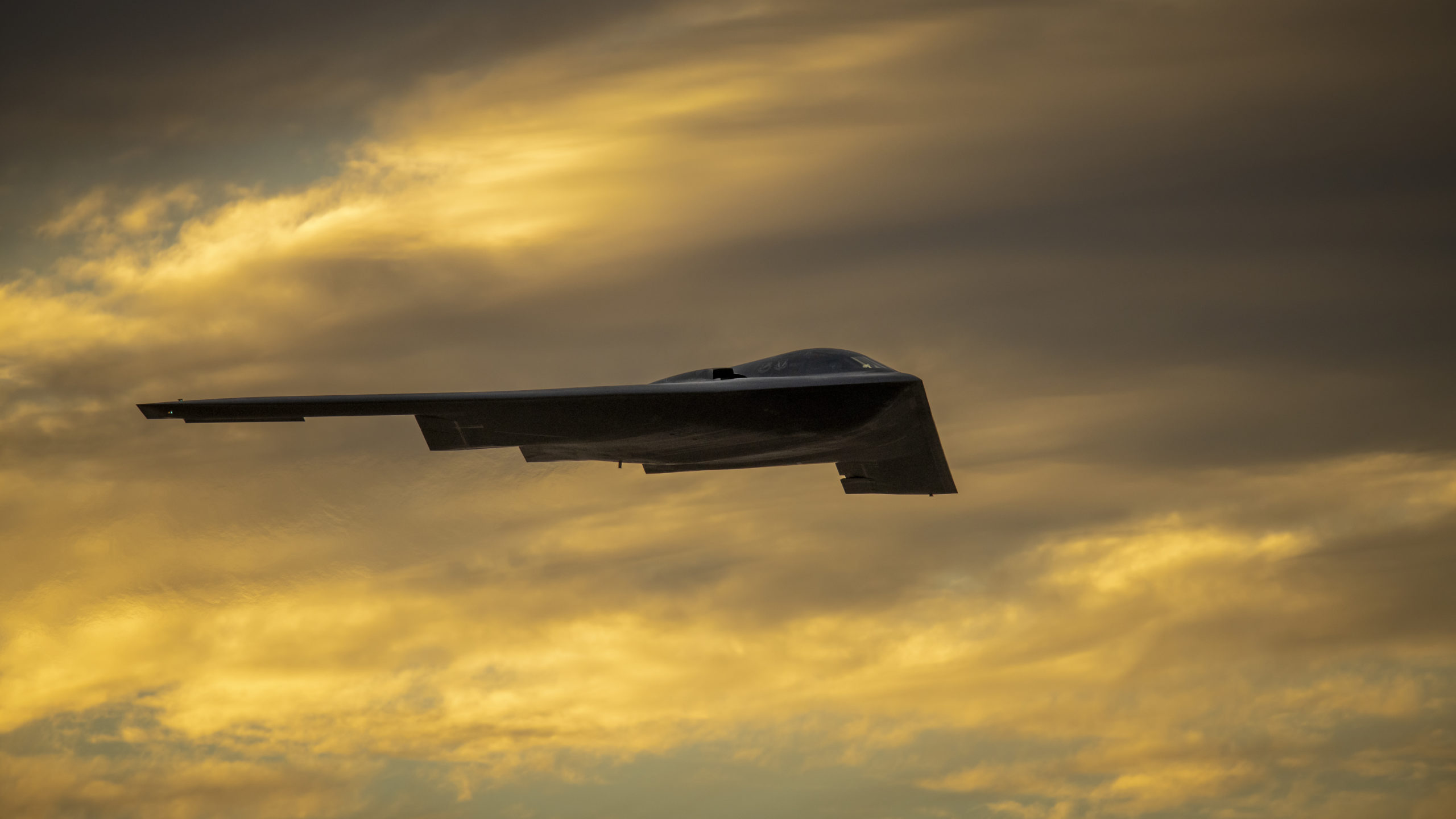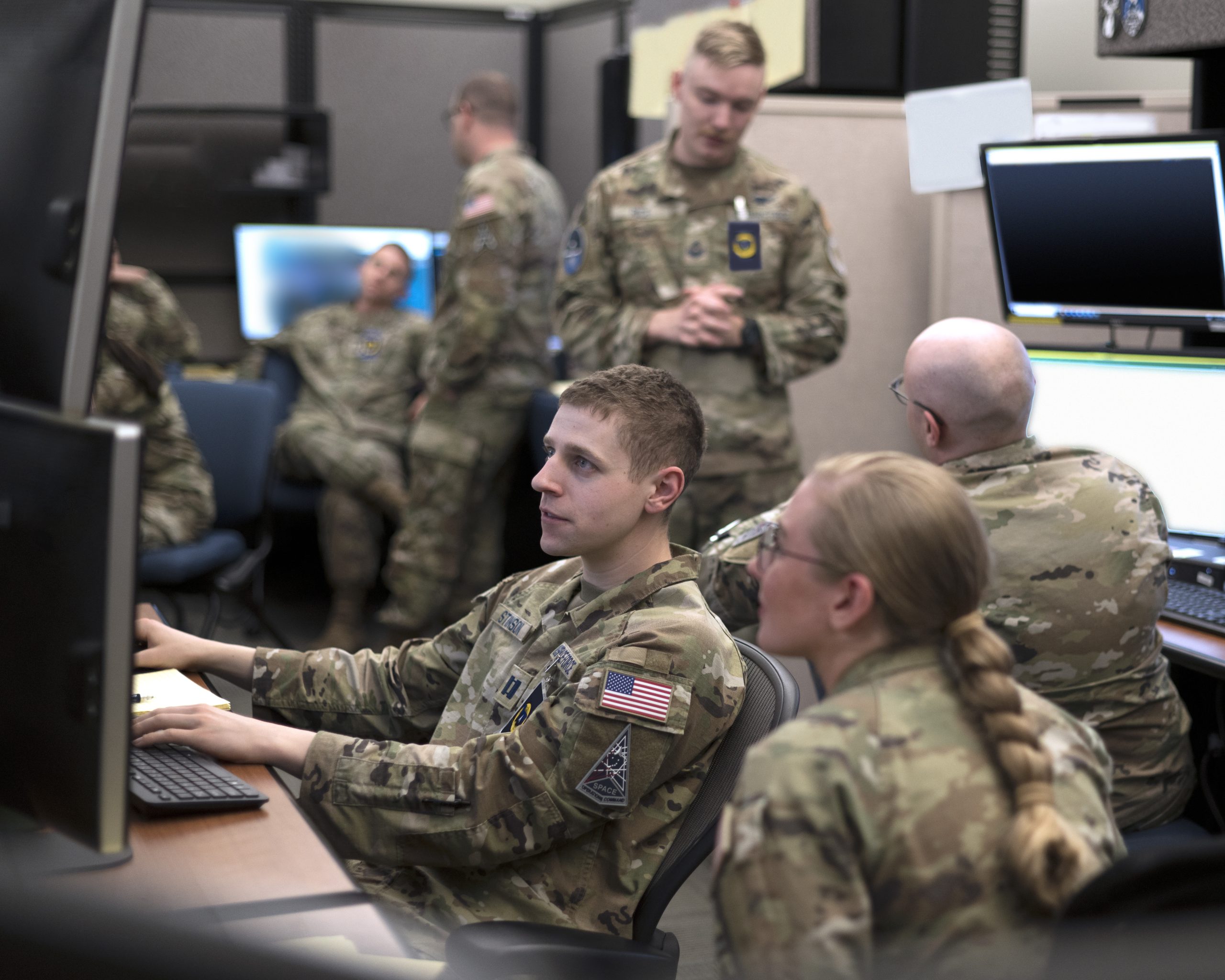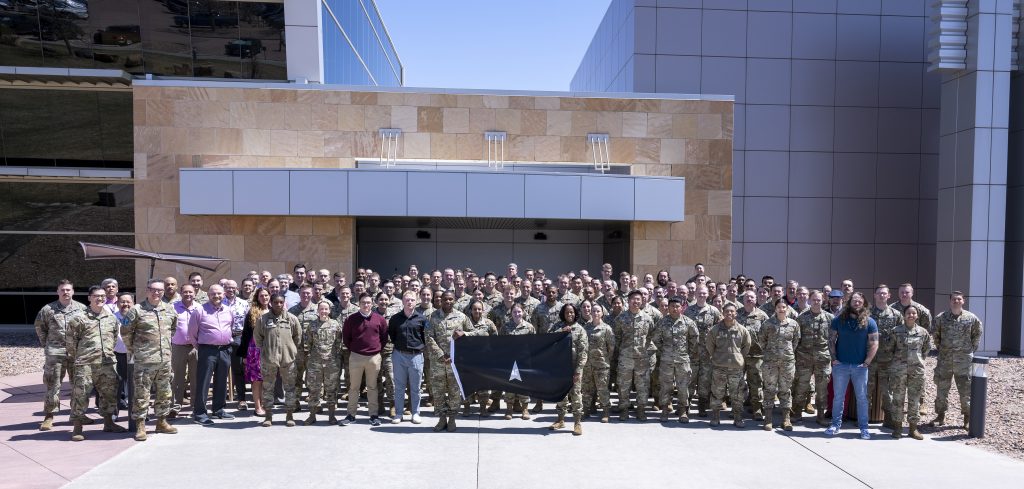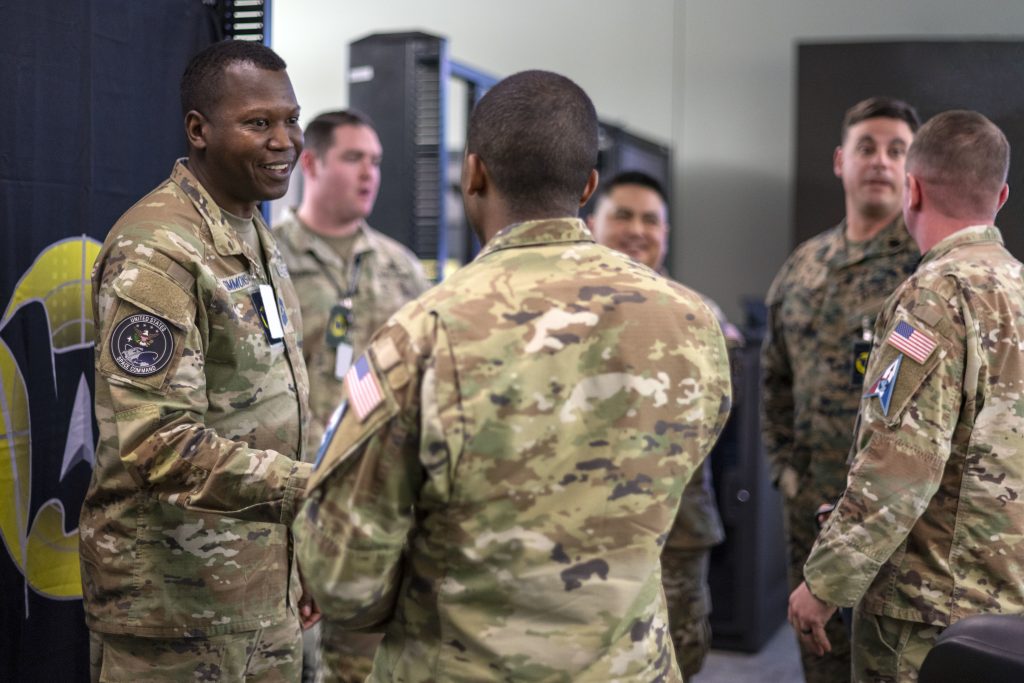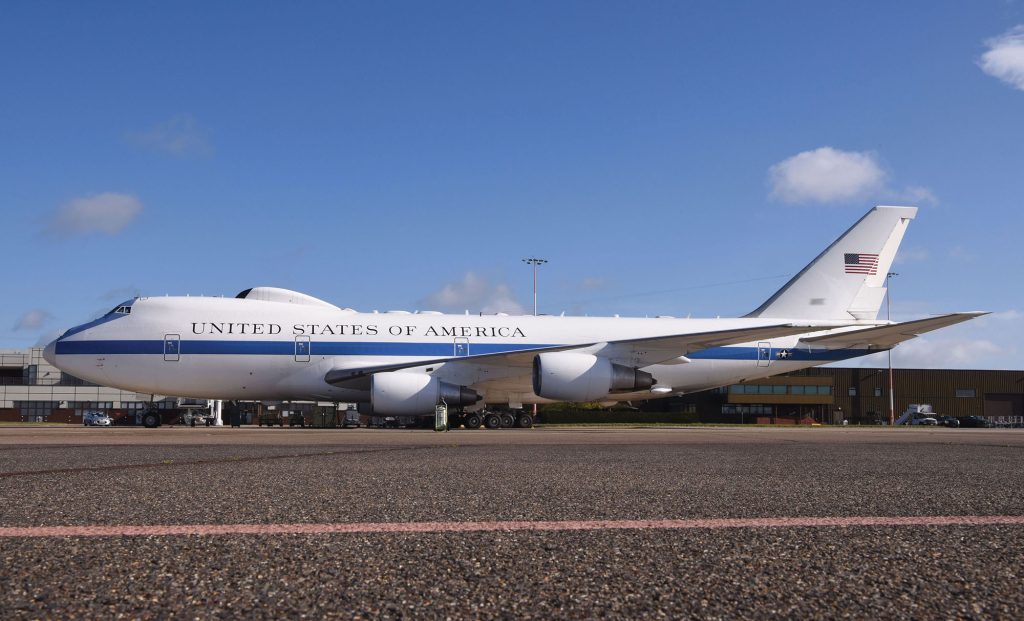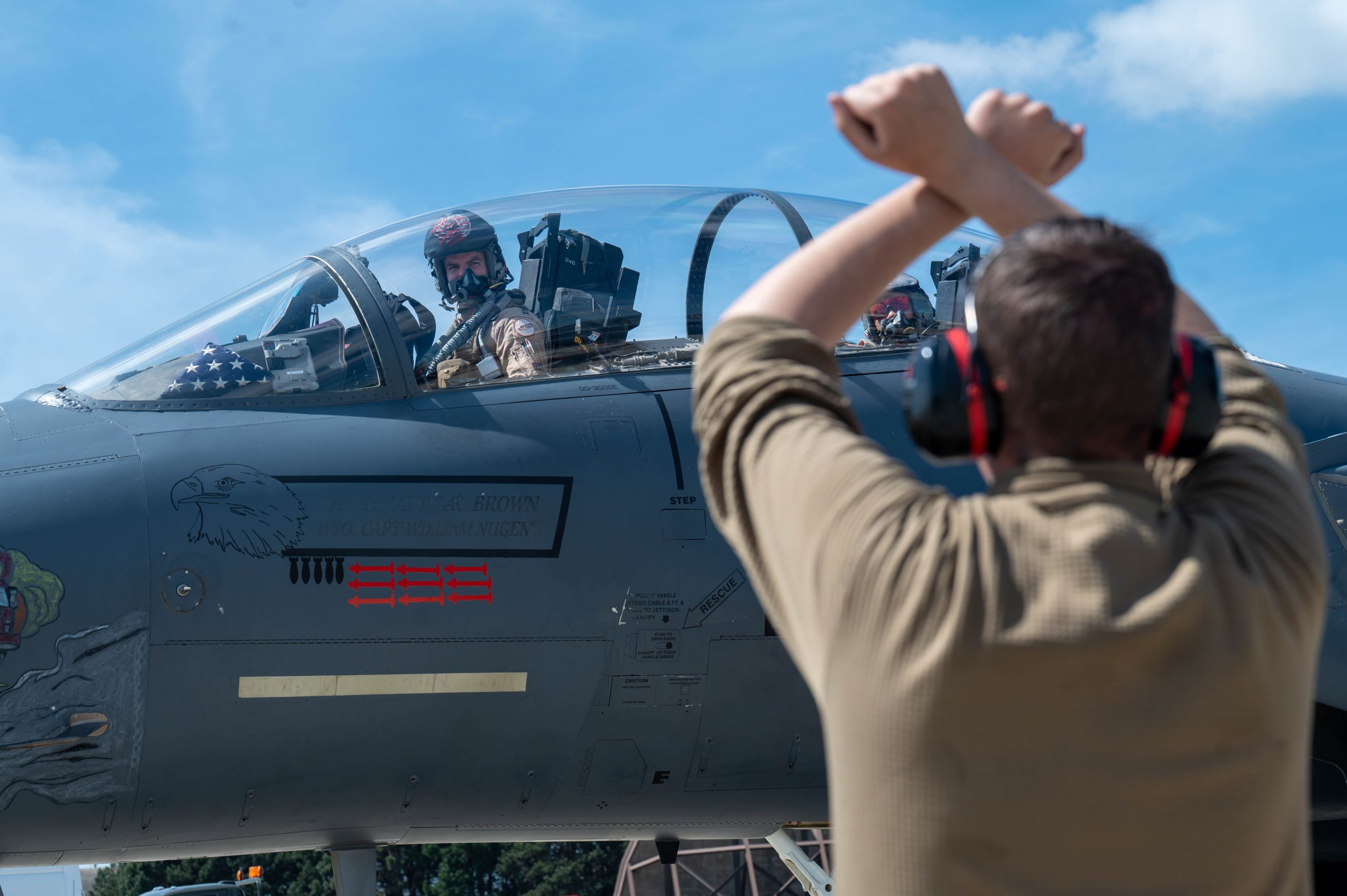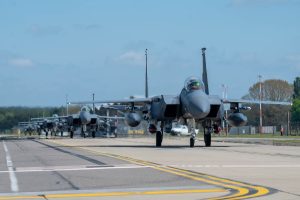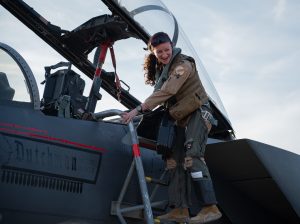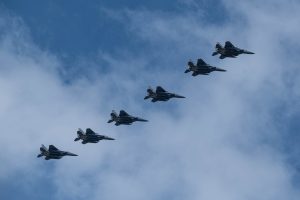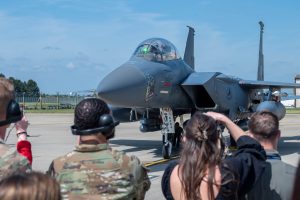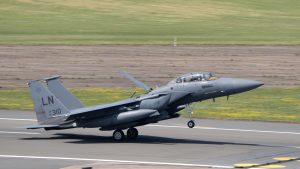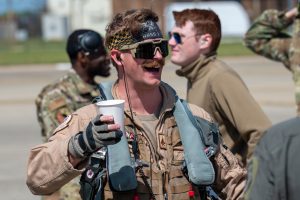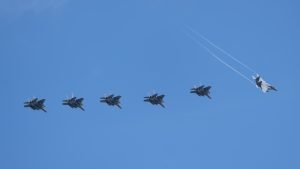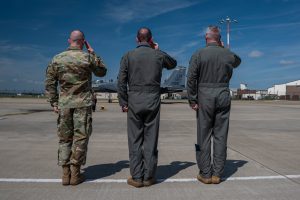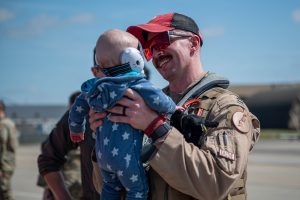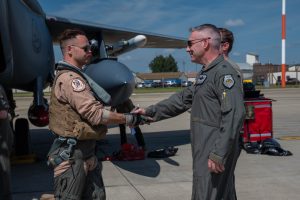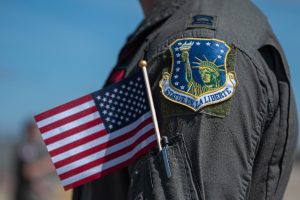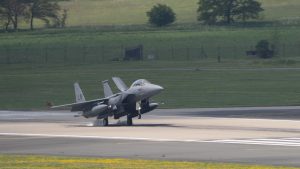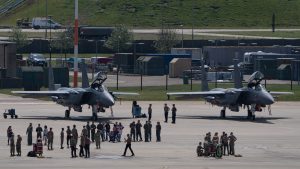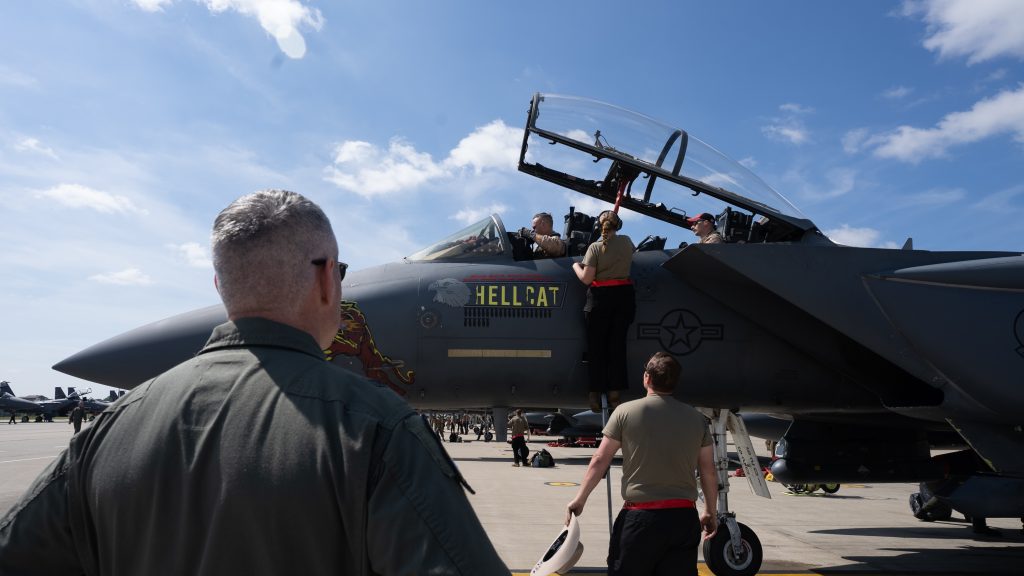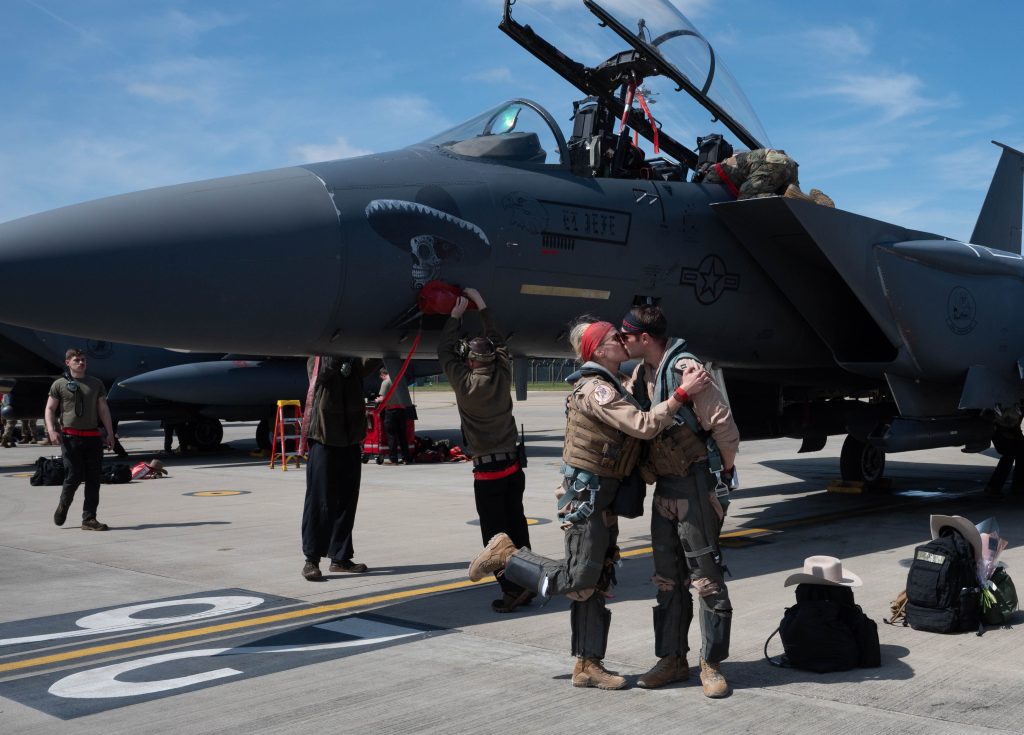The leading lawmaker on the House Armed Services Committee is proposing significant changes to the Air Force’s plans for its F-15 fleet, preventing the service from cutting 26 F-15E Strike Eagles and adding money for more F-15EX Eagles IIs in 2026, according to a draft version of the 2025 National Defense Authorization Act. The moves are aimed at preventing the Air Force from shrinking its fighter fleet—at least for now.
HASC chairman Rep. Mike Rogers’ (R-Ala.) mark of the annual defense policy bill prohibits the retirement of any F-15E Strike Eagles for the foreseeable future. The Air Force’s 2025 Presidential Budget Request asked to retire 26 F-15Es next year—and keep drawing down the fleet afterward.
Instead, the draft NDAA “would prohibit the retirement of any F-15E tactical fighter aircraft, with certain exceptions, until the Secretary of Defense submits a fighter aircraft capability and requirements study that estimates the number of fighter aircraft needed by the Air Force to meet the requirements of geographical combatant commanders,” according to the proposed legislation.
The study the committee wants is due by the end of 2025. Until then, the current F-15Es would need to stay in service.
“The Secretary of the Air Force may not retire, prepare to retire, or place in storage or on backup aircraft inventory status any F–15E aircraft until a period of 180 days has elapsed following the date” Congress is briefed on the report, due by Dec. 31, 2025, the draft NDAA states. Under the plan, aircraft deemed costly write-offs after accidents or due to other damage would be allowed to be stricken from the fleet.
However, whether such an action will be enacted into law remains to be seen. The full committee must hold a markup hearing for the NDAA, which allows members to offer amendments. Meanwhile, the Senate Armed Services Committee plans to mark up its version of the NDAA in June. Eventually, a conference committee will compromise between the two versions and produce the final bill.
The Air Force has wanted to significantly reduce the number of F-15E Strike Eagles in recent years. For 2024, it originally had plans to cut more the F-15E fleet by 119 aircraft, for a final inventory of just 99 fighters. The 2024 NDAA that was enacted into law limited the number of Strike Eagles that could be retired through fiscal 2029 to 68 aircraft, though some lawmakers oppose the retirement of any F-15Es.
In 2025, the Air Force wants to eliminate 26 F-15E Strike Eagles with less powerful Pratt and Whitney F100-PW-220 engines. The service argues that this will help fund upgrades to the remaining fleet and make the aircraft better suited to a near-peer fight.
The Air Force plans to put the Eagle Passive Active Warning and Survivability System (EPAWSS) on the F-15s it keeps, which provides “an advanced digital electronic warfare system capable of defeating modern threat systems in contested airspace,” the service’s 2025 budget documents state.
Separately, the size of the F-15EX Eagle II fleet continues to be debated. The Air Force initially planned to purchase 144 of the fighters, an advanced fourth-generation replacement for the old F-15C/D Eagles. But that number has repeatedly shrunk. The Air Force’s 2025 budget proposes capping the fleet at 98 aircraft after buying 18 more F-15EXs and ending production.
The draft NDAA has different plans—it would authorize $271 million in advanced procurement spending for 24 more F-15EXs to come in 2026, which would bump the fleet to 122 airframes. The Air Force has not revealed its 2026 budget, but like the 2025 budget, it will be capped at one percent growth by the Fiscal Responsibility Act and require significant tradeoffs.
“We do have constraints,” Secretary of the Air Force Frank Kendall told reporters during a briefing on the 2025 budget in March. “We’ve got some tough choices ahead when we get into ’26, which we’re really building now.”
In addition to changing the Air Force’s F-15 plans, the draft NDAA also takes aim at the F-35, which has been plagued by problems with the Technology Refresh-3 upgrade, causing the Pentagon to refuse delivery and forcing Lockheed Martin forced to park brand-new jets.
The draft NDAA proposes slashing the Pentagon’s overall purchase of 68 F-35s to 58 fighters, and would further “permit the Secretary of Defense to accept delivery of only 48 of 58 F-35 aircraft authorized for procurement during fiscal year 2025 until the secretary submits to the congressional defense committees certain corrective action plans and acquisition strategies that will improve research, development, testing, evaluation, and production issues and deficiencies identified across multiple areas within the F-35 program enterprise.”
The Pentagon appears to be on its way to get its way with some aircraft, at least as of now. The Air Force has repeatedly tried to divest aging A-10 Thunderbolt II attack aircraft. Congress balked for years, but the draft bill clears the way for Air Force’s planned 56 A-10 retirements next year.
